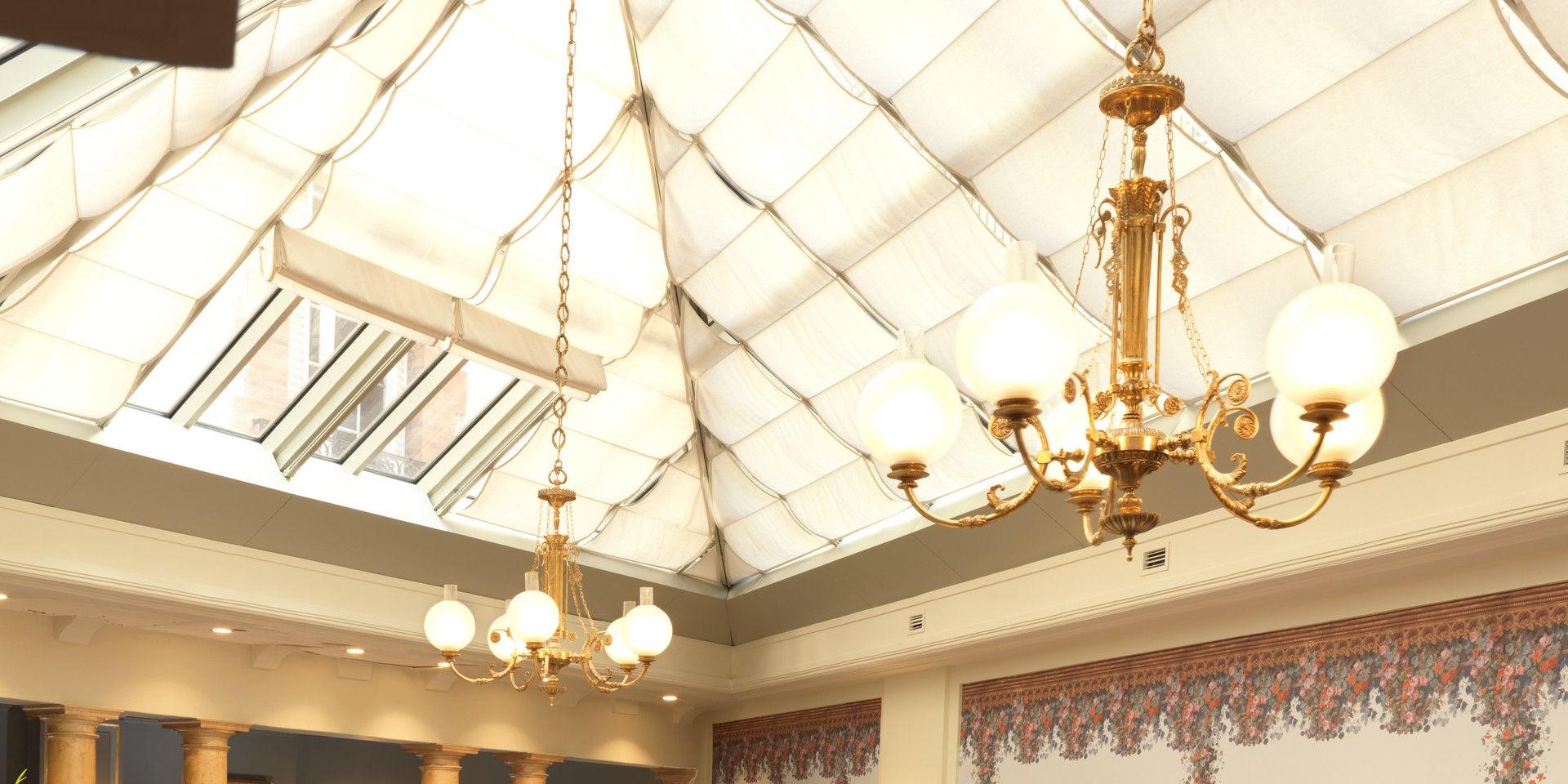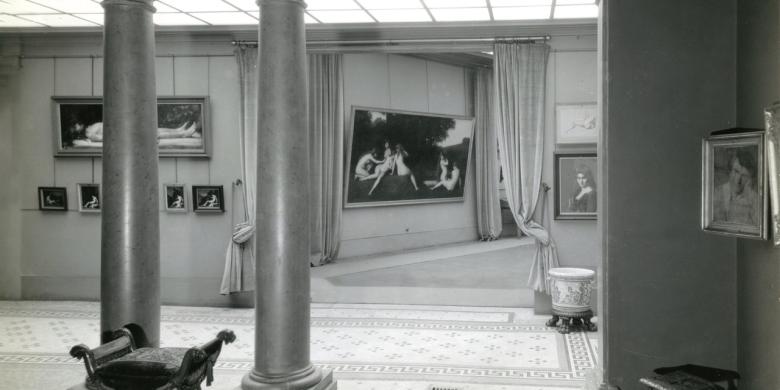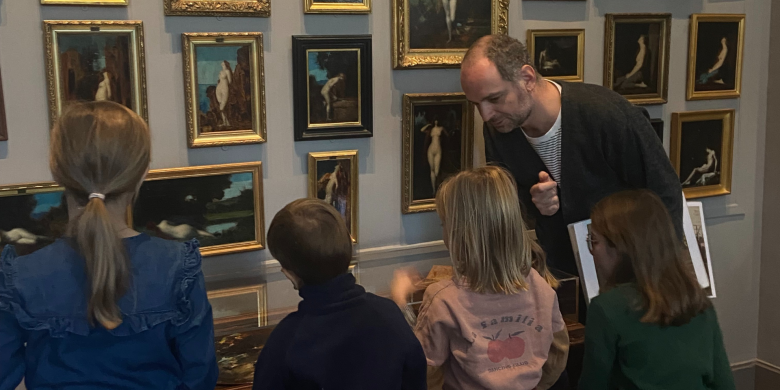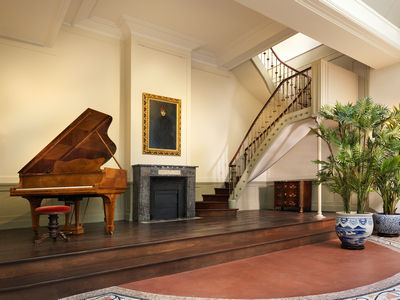
When Guillaume Dubufe lived in the house, the winter garden was clustered and the decor was carefully composed in the style of the other rooms. According to the inventory established after Dubufe’s death in 1909, there was a stone fountain crowned with a marble statue of Eros, bronze and porcelain planters, Japanese lacquer furniture, two red velvet divans, a display cabinet, six bronze candlesticks and 18 paintings (portraits, landscapes, still life and an allegorical painting for a ceiling attributed to Tiepolo).
A little lounge at the back served as a theatre on Tuesday evenings. It was decorated in the same eclectic style, mixing a Regency dresser, a Satzuma vase, a marble bust of Marie Antoinette, paintings by Pierre Puvis de Chavannes and wax medallions of the Marquis de Condorcet and the philosopher Victor Cousin.
In 1894, Louis Énault, described Guillaume and Cécile Dubufe’s home in the Revue de l'Elégance et des Arts: “An atrium of austere taste leads you into a large living room, a hall and a winter garden, where flowers and greenery mix together with objects of curiosity, so in fashion in studios today, and top class works of art.”
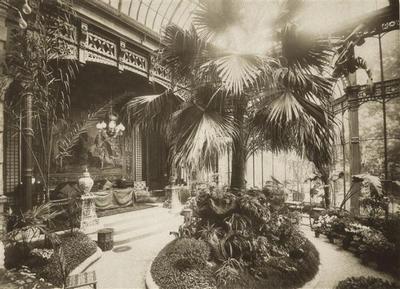
après 1892, Musée d'Orsay © Musée d'Orsay, dist. RMN-GP / Patrice Schmidt
Greenhouses and Winter Gardens in the 19th Century
In the nineteenth century, the use of iron and glass in architecture increased quickly. The industrialisation of materials brought great changes to the industry, enabling the construction of new types of buildings. As winter gardens became fashionable, the bourgeoisie had them built in their second homes in all styles of architecture. Prompted by the desire to show off new and exotic species brought back from faraway expeditions, the fashion was soon being followed in Paris. This love of winter gardens resulted in a growing taste for having plants inside the house and they gradually could be found in apartments too. The French writer Guy de Maupassant described these feelings in Bel Ami when his main character enters the lounge of Charles Forestier: “He again had the feeling he was entering a greenhouse. Huge palm trees opened their elegant leaves in other corners of the room, rising to the ceiling, then stretching out like jets of water. On both sides of the chimney, rubber plants, as round as columns, set out their dark green leaves one on top of the other, and on the piano sat two unknown shrubs, round and covered with flowers, one all pink and the other white, looking like artificial plants, unbelievable, too beautiful to be real.”
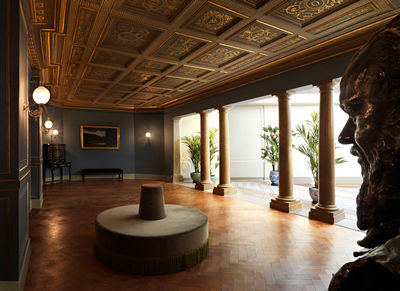
Taste for the Exotic
The popularity of winter gardens in homes can be explained mostly by the expansion of the industrial bourgeoisie and fantasy about the tropics and exoticism. Rattan, wicker and raffia furniture were placed next to oriental carpets and tropical plants. Over the years, winter gardens became a living space in their own right. Most often attached to the house as an extension to the lounge, they were a place to entertain, where one could read, play cards, admire plants or simply chat. Winter gardens became essential to any bourgeois home such as those of Princess Mathilde’s rue de Courcelles, or Gaston Menier’s 61 rue Monceau.

